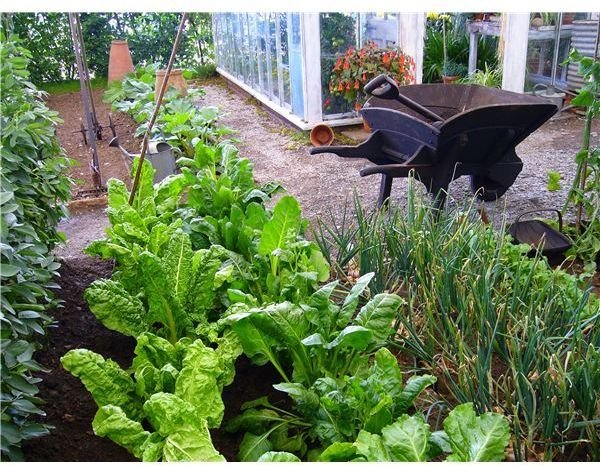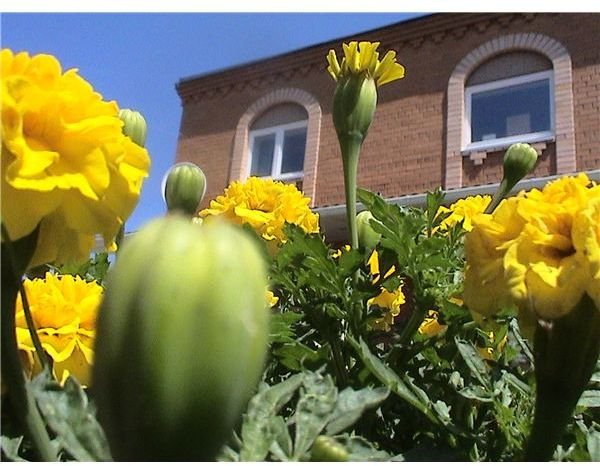Thematic Units on Plants: Plant Math, Writing, Art, Social Studies and Group Activities
Planting Knowledge about Growing
Plants provide a fascinating canvas for creativity for teachers and students alike. With this thematic unit on plants, you can find fun with
writing, science, art and more.
Science
Begin with a discussion about what plants need to survive and thrive. Continue by talking about what plants do for us, including re-oxygenating and humidifying the air and holding a place in the food chain. For helpful books, try The Tree in the Ancient Forest, by Carol Reed-Jones or Jack’s Garden, by Henry Cole.
Provide each student with copies of individual pictures of the life cycle of a plant. Ask students to glue them to the fronts of a flap book; under each pictured flap, students write one to two sentences describing that stage. Try From Flowers to Fruit, by Ophelia  Downden or How a Seed Grows, by Helen J. Jordan.
Downden or How a Seed Grows, by Helen J. Jordan.
Allow students to experiment with plants to guide them through the scientific process. Divide them into small groups and assign each group one of the following topics. Students use the form in the media gallery to complete their project. (Starred topics are ways to extend the lesson for more advanced students.)
-
Types of soil
-
Amount of light
-
Frequency and/or amount of watering
-
Types of food or fertilizer
-
*Magnet effects
-
*Feeding/watering with odd substances (cola, vinegar, etc.)
Math
Review measurement, ratio and proportion by having students solve word problems about the area of a garden, the volume of topsoil/fertilizer required, or calculating the yield of plants under certain conditions. Basic operations and money problems can also be plant-themed. Extend the lesson by asking students to write more garden-based problems.
Social Studies
Working in pairs, students can research how different types of plants were used historically, including culinary, medical, or other uses. Students might also research the language of flowers. Partners report by creating a poster or a plant guide to explain their findings.
Writing
The thematic unit on plants lends itself to a variety of writing styles. Begin with short paragraphs to summarize the introductory discussions. Continue working with nonfiction writing by having students write individual lab reports from the results of their group experiments.
Descriptive writing is also a great match for a plant study. Ask students to write an encyclopedia or plant guide entry to describe a specific plant. Encourage them to provide rich details, so that a reader can imagine what the plant looks like without a picture or live sample. Remind them to use all of their senses in the descriptions.
Poems are also a fun plant-themed writing project. Use shape poems to assess understanding of the characteristics and function of the parts of the plant; as students write about the flower, for example, they put the words around the shape of the petals, then duplicating those steps for the stem, leaves and roots.
Students practice description and using synonyms when they write formula poems about plants, including diamante, haiku and acrostics.
Art
Provide each student with a potato, a plastic spoon and toothpicks, along with materials for making faces on the “critters” they create. They use the spoon to scoop out a section of the potato to about 1/4 to 1/2 inch thick, and then they decorate the rest of the potato to make an animal or alien, using the toothpicks to make legs that will also hold the creature up. Finally, they sprinkle grass seeds into the scooped area, where it will grow into the creature’s hair.
Unit Culminating Project
Students will use all the knowledge they have gained to design specialty gardens. Divide them into groups and assign one group a section for culinary herbs, one for herbs used to make teas, a moon garden and a section for vegetables.
Plans should include how the group would meet the plants’ lighting, soil, water and food needs, as well as how they would arrange the plants to provide the appropriate spacing while presenting a visually appealing garden. One component of the plan should be a scale

model drawing of the garden’s layout; another would be a supplies list detailing the amount needed for each, based on the assigned size of the space and the specific plants they would include.
Students should also include suggestions for the use of the plants. They might also research historical or public gardens of the same type.
If the school has the land available, allow students to implement their plans by planting their gardens. To facilitate this, each group should send a representative to a committee that will determine how to tie the different gardens together.
Following this thematic unit on plants, your students will have knowledge for a lifelong hobby.
Image Credits
Photo courtesy of PhotoXpress.com
